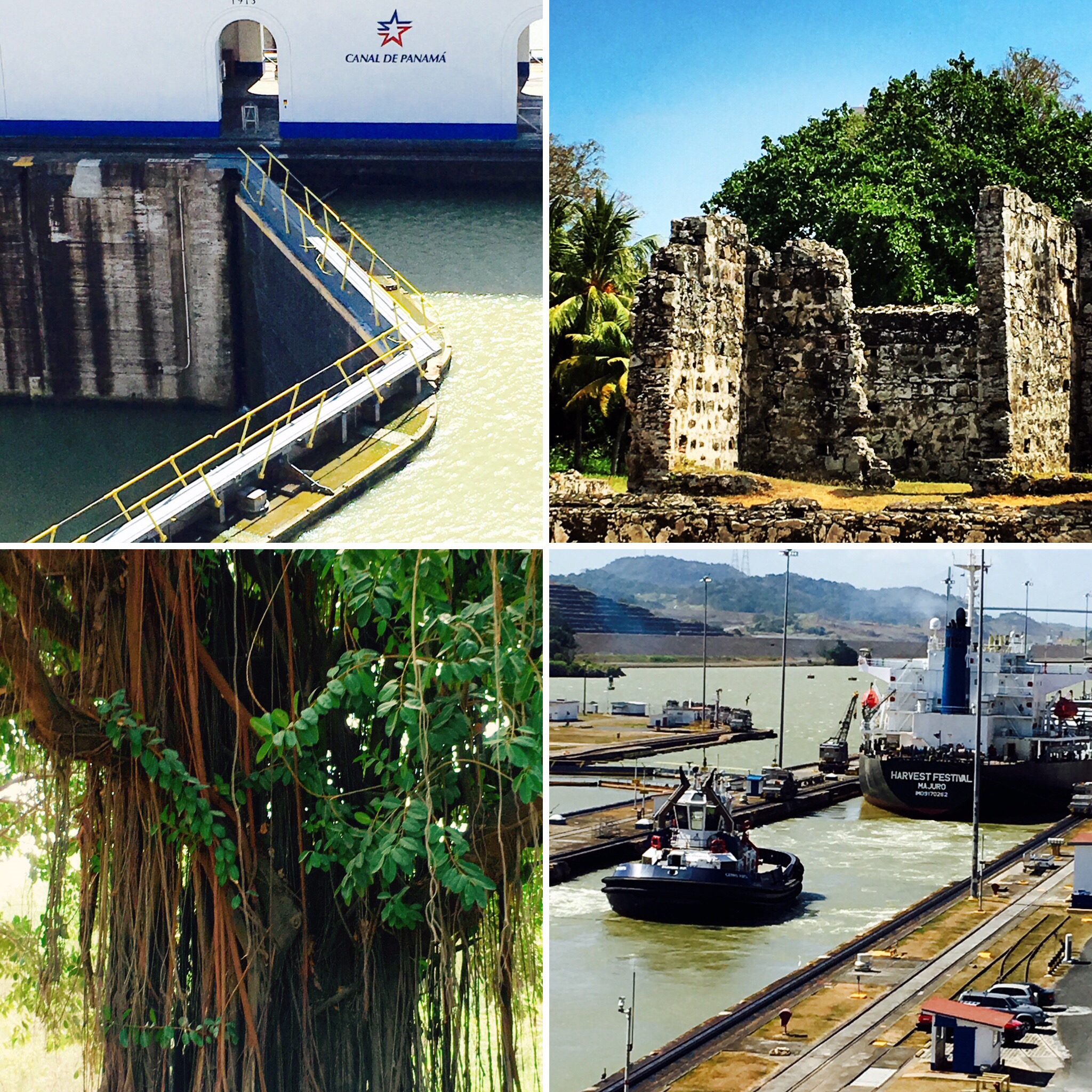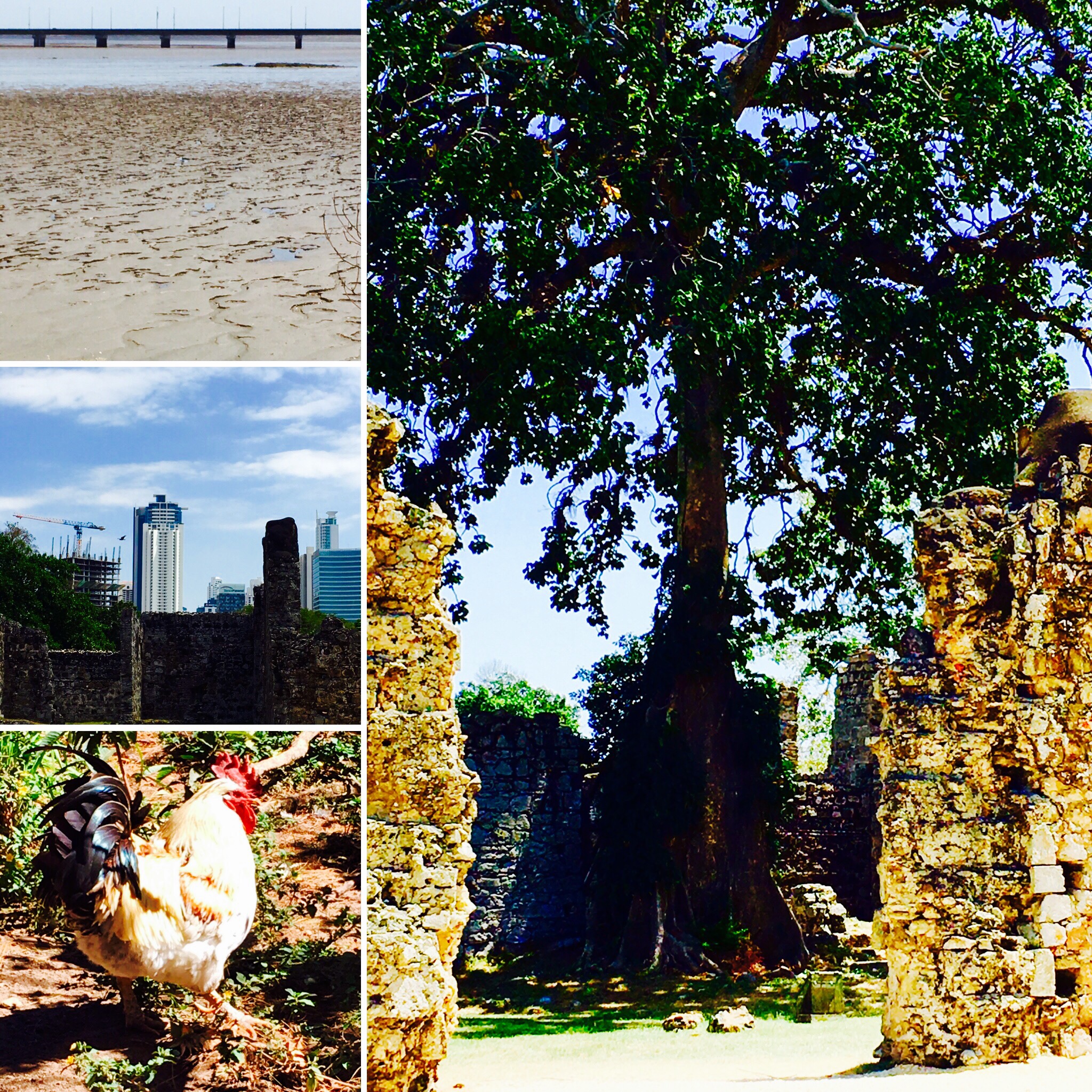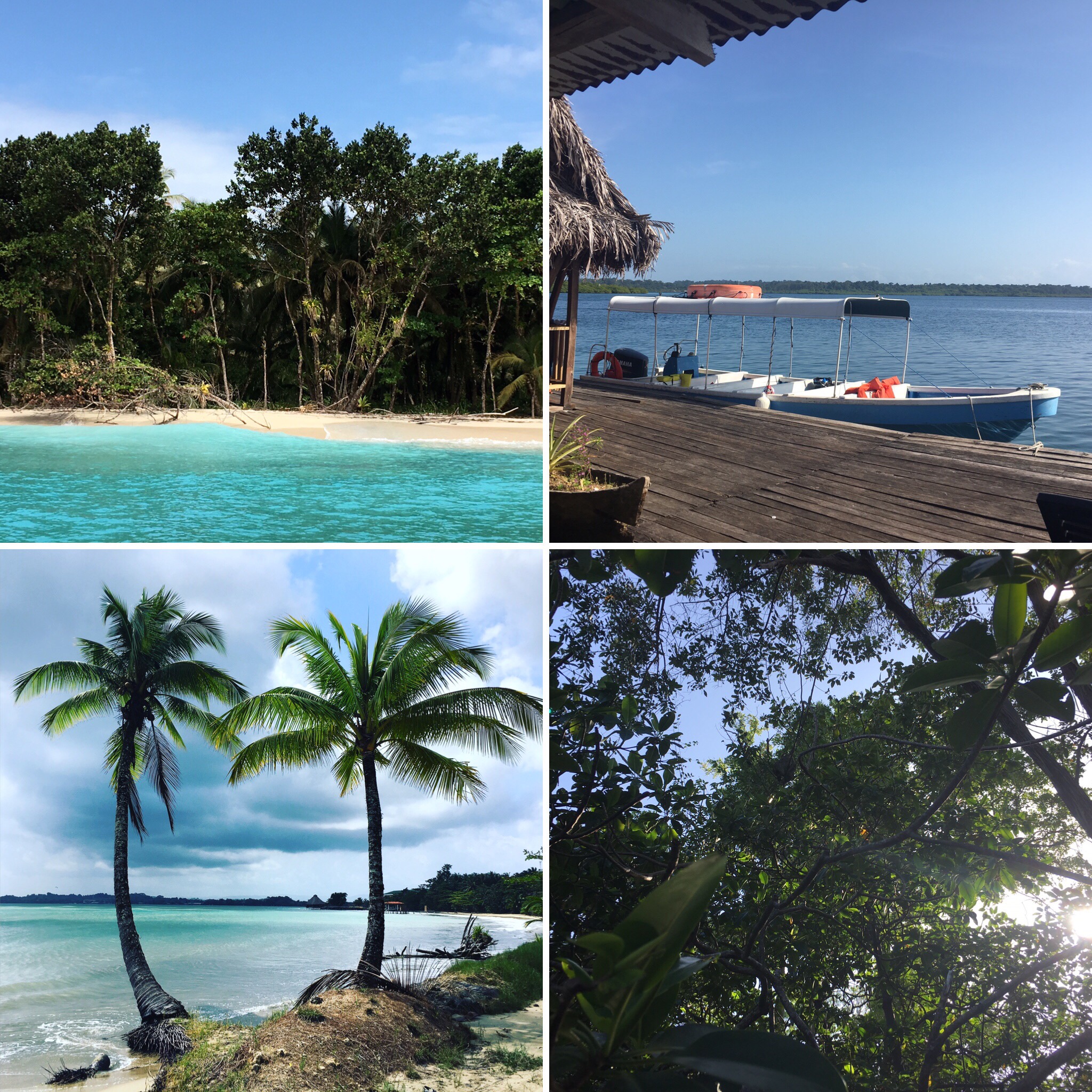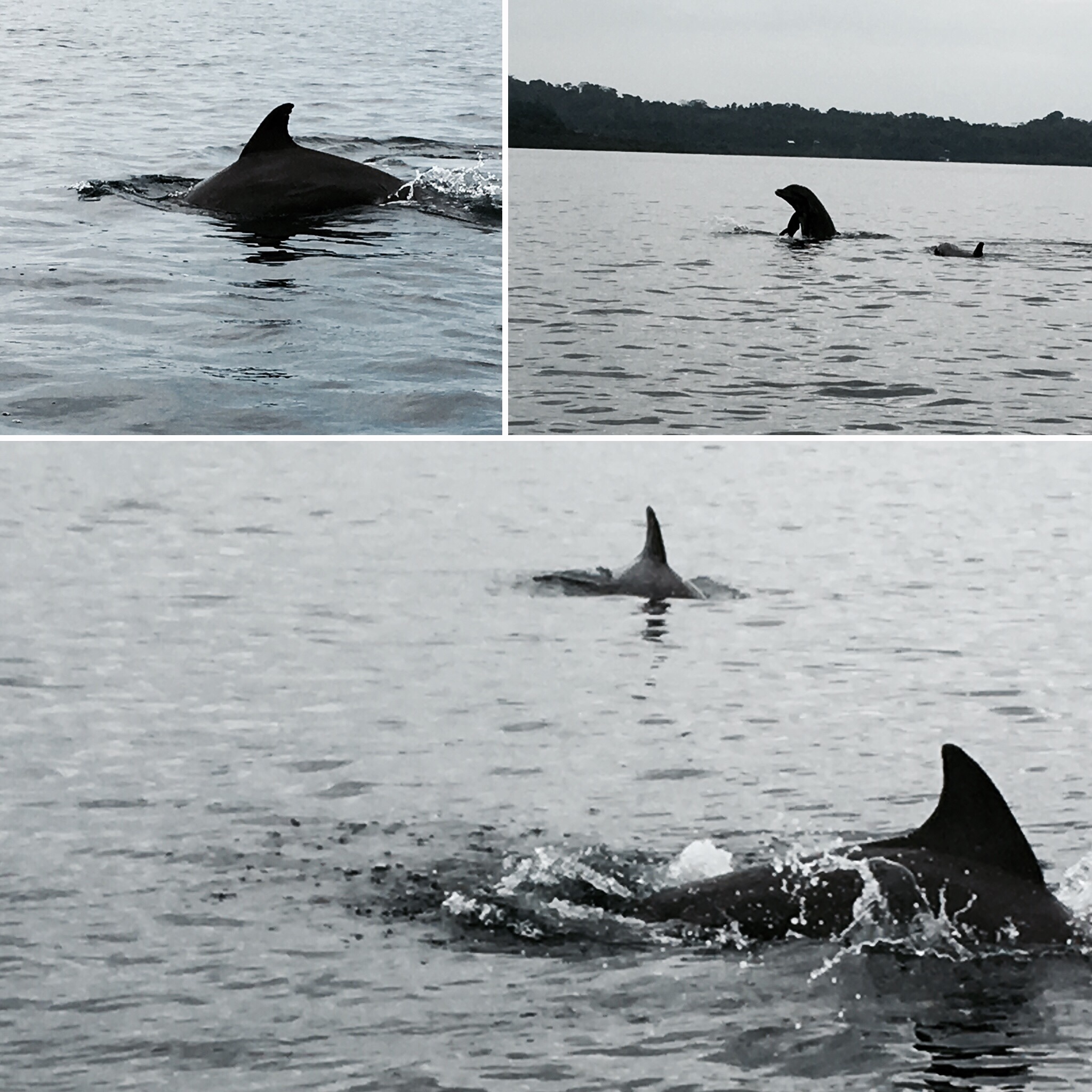People should go back to yelling “Fire!” in panic. I think I would have reacted to “Fuego!” Instead, K and I calmly continued our meal as someone shouted and all other patrons rushed to the door. I was matter of fact, “Looks like that tour group overstayed their dinner time.” Then one kind woman ran back for us, clearly realizing we didn’t understand Spanish and explained the building was on fire. We grabbed fistfuls of McNuggets and fries and ran.
For all our precautions in Colombia and Venezuela, Panama City provided our sketchier moments. A planned 5:30am departure the following morning sent us in search of a grocery store to pack snacks for breakfast. We passed the McDonald’s on our way back and walked in to make up for the run of mediocre to awful meals in Caracas. Our guide/wrangler had given specific directions to the store, “Go two blocks down and four blocks over. That’s safe. Don’t go three blocks down!” While we stayed obediently within that radius, the fire forced us off our planned path, and along unlit streets with crumbling edges past a cluster of feral cats (incidentally called a destruction collectively), a trio of hookers and a man who popped out at us from behind the car he was fixing in the dark.
That was our first night in Panama. Our last night we ate at a restaurant in Casco Viejo, the historic centre of the city. The directions here were a firm, “Stay on the cobblestone streets.” We had driven through the neighbourhood that afternoon on the way from the airport to our hotel, a 15-minute drive that took an hour due to Carnival road closures. The streets were flanked by run-down buildings and people lounging in doorways staring stonily at our little white minivan as we crept past in traffic. One guy ran at us from a car parked crookedly in the street waving a US bill but we didn’t stop to find out his motive. But then the neighbourhood transformed from aggressive to attractive within a block. The buildings got older and more stately, people were peacefully strolling and cobblestones appeared underfoot. Casco Viejo proper is charming with narrow streets, churches, a kind of waterfront, stone boardwalk-sea wall, and lots of restaurants. My final dinner of octopus and faux risotto made of Israeli couscous was followed by group drinks at the rooftop bar overlooking the lit-up city. We planned a pretty waterfront walk back to the hotel but were detoured by security through the edges of a Carnival concert and city streets made safer by the sheer number of people and cops on every corner. Our guide made good use of them by confirming the safety of our new route periodically. It’s stuff like that that paradoxically makes me feel less safe. But we laughed as we turned a corner we’d driven by earlier in the day, one about which our guide had said, “Well I wouldn’t walk around there!”
We could have spent another day in Panama City if only to take a boat cruise through the canal. Instead, we watched it from an observation deck and tried to absorb facts and rumours:
Panama is almost exactly a horizontal “s”, not a comma on the end of Central America as I expected.
The canal is in the middle of the country and runs northwest to southeast. It starts with a bay off the Atlantic, goes through a narrow set of locks which open into a large lagoon and artificial lakes before constricting again into two more sets of locks, the last of which is Miraflores, just outside Panama City. The canal has two lanes and all ship traffic moves in one direction in the morning and the other in the afternoon. There is a project underway for a third wider and deeper lane to accommodate the ships of today.
Two little electric machines run on rails on either side of the canal like those rabbits at racetracks and tow the ships through.
Although the average toll is $14k US (a gamillion Canadian), some ships pay as much as $300k for the 10-hr crossing, still a deal compared to the 15-day long way round that costs (rumoured) $3m in fuel and operating costs. An American is credited with the cheapest toll at $0.36 for swimming the canal in 1928.
And so we reached the end of our trip, a slightly different style of travel for us, with more guides and drivers and people taking care of us than usual but with our standard keep moving and see more philosophy that had me on 10 flights over 12 days. I’m back now and people ask me what I thought. I’m not sure what to say because I enjoyed it very much and feel lucky for the opportunity to have gone but also realize clearly the difference for me between travel and vacation. Both are great but Caracas, Bogota and Panama City fall into the travel category, learning more about the culture, about daily life and ancient or recent history. The middle part of the trip to Bocas and Boquete was very much vacation, relaxing and focused on activities like swimming, snorkeling or hiking (not me personally, of course). In spite of all the worry before leaving, Caracas and Bogota were the highlights by far and it is to Colombia that I’d return to see more. I guess when it comes to travel, I prefer not to stay on the cobblestones.






